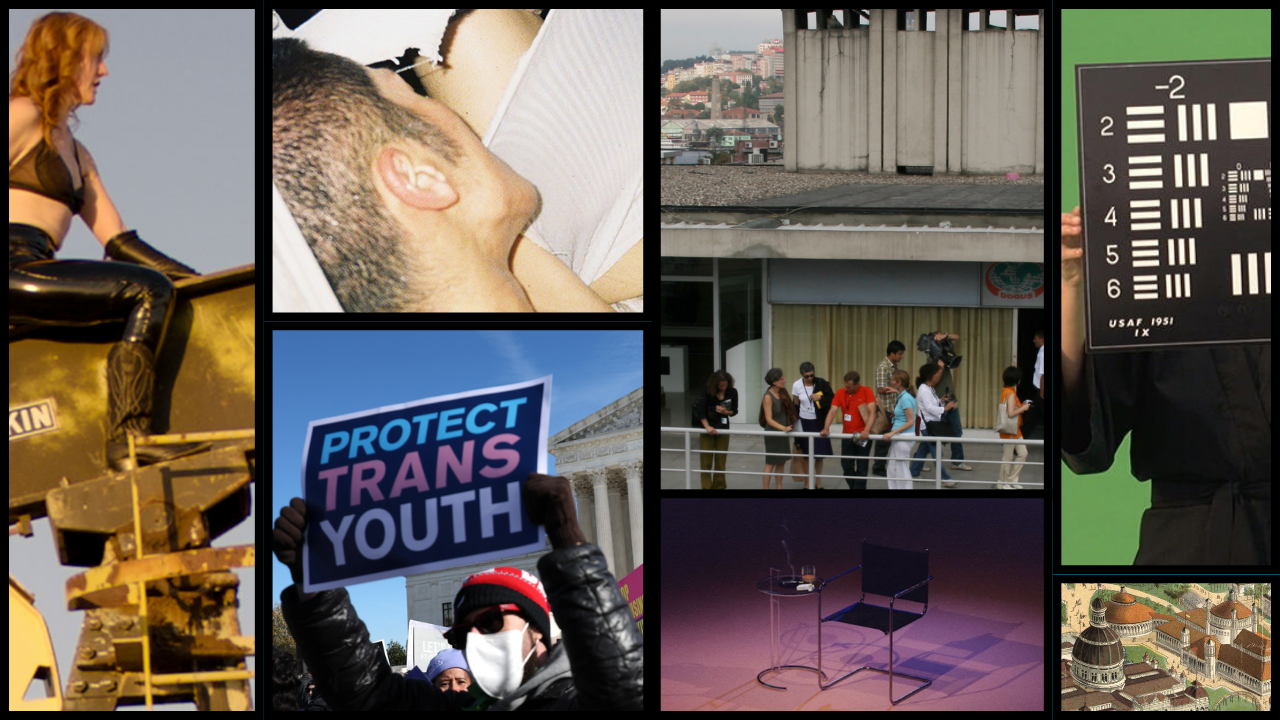Juliet Jacques on the School of Theory and Activism’s ‘Queer in Space’
‘This poetic work of propaganda helped to bring about a queer communist comradeship that spanned more than 6,000 kilometres’
‘This poetic work of propaganda helped to bring about a queer communist comradeship that spanned more than 6,000 kilometres’

‘They called it an orgy / They called it a mystery.’ So opens one of the poems recited by Aleksandra Bagdasarova in Queer in Space: Kollontai Commune Archive, a film made by the School of Theory and Activism (STAB) in Bishkek, Kyrgyzstan. It’s unclear who wrote them but, stylistically, the poems recall the futurism that flourished during the first decade of the Soviet Union, before Stalinism crushed it. Not everyone in the group’s orbit was male, but the most prominent poets were; none of them, as far as we know, was ‘queer’ (or at least open about being queer) even though Vladimir Lenin decriminalized homosexuality in 1919, providing a 14-year window for experiments in gender and sexuality before Joseph Stalin outlawed it again in 1933. This sense of the utopian possibilities that were created by the Bolshevik revolution, and then swiftly closed by the Soviet bureaucracy, waiting for historians to rediscover them, permeates the 17-minute film. The poems are ecstatically delivered; the opening one calls on citizens to ‘wipe off’ the ‘illusory signs’ of gender, and so offers a hint of the possibilities that might feed into a future socialist project.
The film focuses on the archive of the gender-dissident Kollontai Commune, which was apparently active in Frunze (as Bishkek was called during the Soviet period) in the 1970s. Not well known in its day and long forgotten since, the group was unearthed by STAB in their search for antecedents of their own queer, futurist, left-wing programme. Although the group’s members were communists, they were critical of the Soviet regime and, in particular, its continued attachment to the nuclear family, which the 1920s Bolshevik feminist Aleksandra Kollontai had hoped to discard. In the film, two of STAB’s members, Georgy Mamedov and Oksana Shatalova, show postcards the commune sent expressing queer solidarity as well as their Karl Marx and Friedrich Engels calendars, détourned to include images of Kollontai and slogans about ‘cosmic love’. The group’s texts furthered Kollontai’s idea that love would become something different under socialism: they asked why ‘love-comradeship’ should only be between a man and a woman, as still mandated by Soviet law in the 1970s, and why gender roles should not be considered as historical constructs and, as such, fluid and malleable.
Mamedov talks about ‘queer’ being a conscious anachronism that was used because the archived texts anticipated contemporary theory with such prescience. Mournfully, I recognized a technique I’ve used in my own writing: inserting transgender people into periods and places where they may have been present but were never recorded, to give us a history that we have been denied. Similarly, this beautifully presented documentary dissolves into fiction. STAB created the predecessors they wanted, or needed, because the aspects of the Soviet project that most excited them had either been deliberately suppressed or (as with its space-age techno-futurism) discarded with the USSR’s economic collapse. When I met Mamedov in Bishkek – at an event about speculative queer literature where I read a short story about a transsexual woman in the Weimar Republic, and Kyrgyz author Mohira Suyarkulova read a piece of futuristic, gender-breaking science fiction – he confirmed my suspicions about STAB’s inventiveness. Still, even if they, I, we couldn’t have the Kollontai Commune, this poetic work of propaganda helped to bring about a queer communist comradeship that spanned more than 6,000 kilometres. As Queer in Space showed me, a history does not always have to be true, or even in the past, to unite us.























